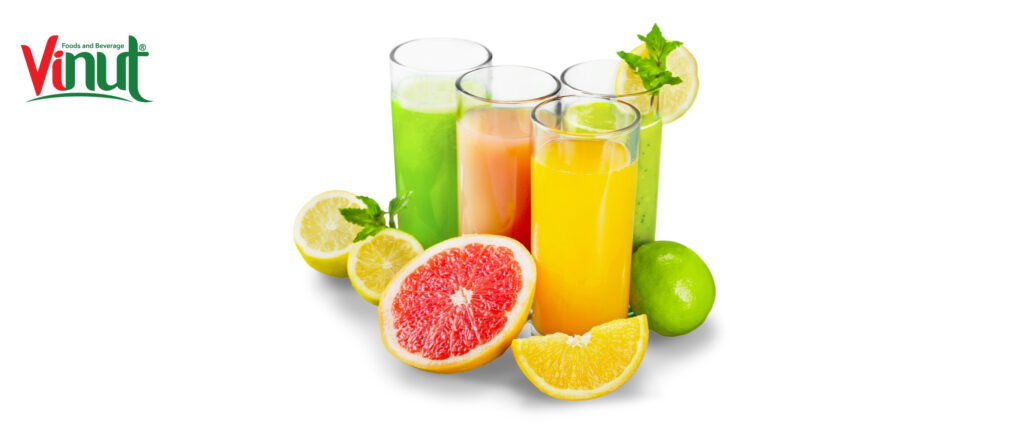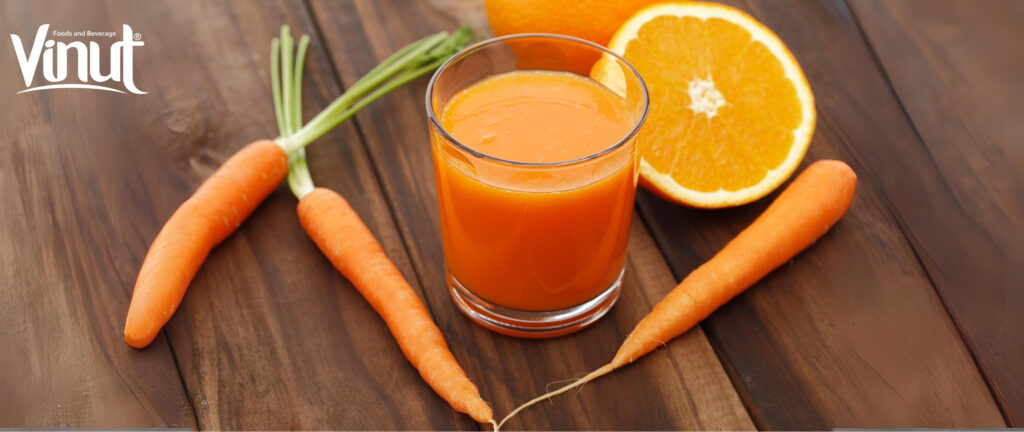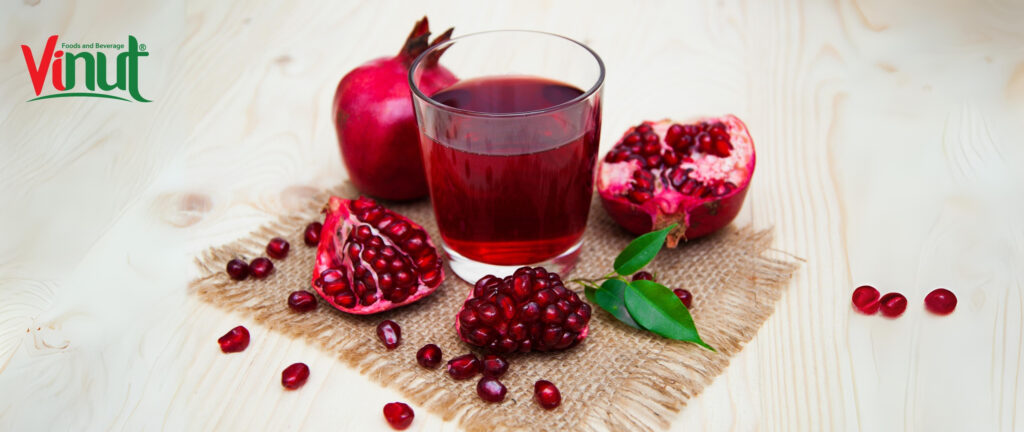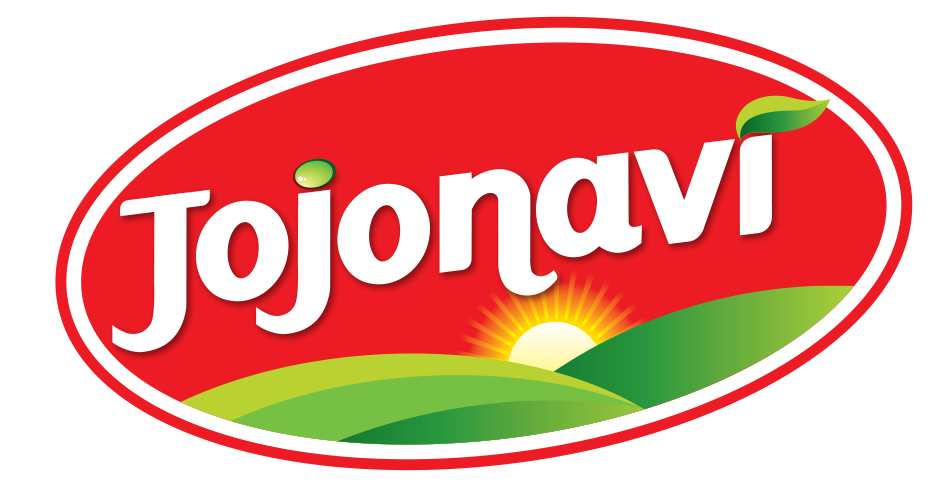Making fresh fruit juice from common fruits is not only a way to provide natural nutrients to the body but also a fun and creative experience. With a little dedication and some favorite fruits, you can create delicious, flavorful juices while enjoying pleasant, refreshing aromas every day.
Fruits are abundant natural resources containing various vitamins, minerals, and antioxidants crucial for health. When we process fruits into juice, we not only retain all the nutrients but also create a flavorful and convenient way to consume fruits. Fresh fruit juice is not only a refreshing drink but also an excellent way to meet the body’s daily hydration and nutritional needs.
In this article, we will guide you through the steps of making juice from common fruits, from preparing ingredients to simple and convenient processing. With shared tips and experiences, you’ll be able to create delicious, nutritious juices for the whole family every day. Let’s explore and enjoy the fresh and delicious flavors of fruits through natural juice made at home!

Benefits of Natural Fruit Juice
Natural fruit juice is not only a rich source of nutrients but also an essential part of a healthy and balanced lifestyle. Fruits are natural treasures created from the earth and sunlight, containing a variety of essential nutrients for the human body.
With a diverse combination of vitamins, minerals, and antioxidants, natural fruit juice is not only a delicious drink but also an important means of maintaining health. Vitamins A, C, E, and various B vitamins in fruits play a crucial role in maintaining a strong immune system, protecting the body from diseases and harmful bacteria.
Moreover, minerals like potassium, magnesium, and calcium in fruits also play an important role in maintaining cardiovascular health, stabilizing blood pressure, and improving muscle and nerve function. Antioxidants like polyphenols and flavonoids not only help protect cells from the effects of free radicals but also prevent the aging process and related diseases.
Furthermore, thanks to the natural fiber content, fruit juice can also help enhance the digestion process, support the efficient functioning of the intestinal system, prevent constipation, and improve nutrient absorption. This not only helps the body utilize nutrients to the fullest but also maintains a healthy and balanced digestive system.

Making Juice from Common Fruits
Orange – Carrot Juice
Ingredients:
2-3 oranges (depending on size and preference)
3-4 carrots (depending on size and preference)
Prepare the ingredients:
Rinse the oranges and carrots under running water.
Peel the oranges and carrots, cut them into small pieces for easy juicing.
Prepare the juicer:
Assemble the fruit juicing part into the juicer according to the manufacturer’s instructions.
Juice the fruits:
Place a bowl or glass under the juicer’s spout to collect the juice.
Put each piece of orange and carrot into the juicer and turn on the machine to juice.
Process the juice:
After all the fruits have been juiced, shake the container with the juice to mix the flavors.
If desired, you can add some ice or sugar to adjust the taste according to your preference.
Serving:
Pour the orange carrot juice into a prepared glass or cup.
Add ice cubes if desired.
Enjoy immediately while still fresh.
Tips:
To enhance the flavor, you can add some mint leaves or a slice of ginger during the juicing process.
If you prefer, you can use a blender to puree the fruits instead of a juicer.
With these simple steps, you’ll have a natural orange carrot juice, rich in vitamins and nutrients, to supplement energy and maintain health for the whole family. Enjoy!

Apple and Pear Juice:
Apple pear juice is a refreshing, cool beverage that provides many nutrients to the body. Here’s how to make simple apple pear juice at home:
Ingredients:
2 apples
1 pear
Filtered water (according to preference)
Honey or sugar (according to preference)
Ice cubes (according to preference)
Tools:
Fruit juicer or blender
Strainer (if using a blender)
Glass
Prepare the ingredients:
Rinse the apples and pear with diluted salt water to remove dirt and bacteria.
Peel the apples and pear (optional).
Cut the apples and pear into bite-sized pieces.
Remove apple and pear seeds.
Juice the fruits:
Put the apples, pear, and a little filtered water into the blender.
Blend the mixture until smooth.
Use a strainer to remove pulp and retain only the juice.
Complete:
Add honey or sugar to the apple pear juice (according to preference).
Add ice cubes if you want to enjoy cold juice.
Pour the juice into a glass and enjoy.
Note:
Choose fresh, ripe apples and pears for the best taste.
You can adjust the ratio of apples to pears according to your preference.
It’s best to drink apple pear juice immediately after juicing to preserve the flavor and nutrients.
Avoid drinking too much apple pear juice in a day as it may cause bloating and indigestion.

Grape and Pomegranate Juice
Grape pomegranate juice is a perfect combination of the sweet taste of grapes and the slight tartness of pomegranate, bringing many health benefits. Here’s how to make simple grape pomegranate juice at home:
Ingredients:
200g grapes (any variety you like)
1 pomegranate
Filtered water (according to preference)
Honey or sugar (according to preference)
Ice cubes (according to preference)
Tools:
Fruit juicer or blender
Strainer (if using a blender)
Glass
Prepare the ingredients:
Rinse the grapes and pomegranate with diluted salt water to remove dirt and bacteria.
Remove grape stems.
Cut the pomegranate in half, separate the pomegranate seeds from the peel.
Juice the fruits:
Put the grapes, pomegranate seeds, and a little filtered water into the blender.
Blend the mixture until smooth.
Use a strainer to remove pulp and retain only the juice.
Complete:
Add honey or sugar to the grape pomegranate juice (according to preference).
Add ice cubes if you want to enjoy cold juice.
Pour the juice into a glass and enjoy.
Note:
Choose fresh, ripe grapes and pomegranates for the best taste.
You can adjust the ratio of grapes to pomegranates according to your preference.
It’s best to drink grape pomegranate juice immediately after juicing to preserve the flavor and nutrients.
Avoid drinking too much grape pomegranate juice in a day as it may cause bloating and indigestion.

Some Notes When Making Fruit Juice
Choose ingredients
Always choose fresh and clean fruits: Preferably buy fruits in season for the best quality. Choose fruits with bright colors, firm skins, and no bruises or damage. Avoid buying fruits that are overripe or underripe as they may affect the taste and nutritional content of the juice.
Clean fruits before processing: Rinse fruits thoroughly under running water to remove dirt, bacteria, and preservatives. You can soak fruits in a diluted saltwater solution for about 10-15 minutes to increase cleaning effectiveness.
Cut fruits into small pieces: Cut fruits into bite-sized pieces for easier juicing or blending, and to extract more juice.
Remove peels and seeds (if necessary): Depending on personal preference and the type of fruit, you can choose to peel the fruit or leave the peel on. However, for fruits with thick, tough, or bitter peels (such as oranges, lemons, or grapefruits), it’s best to remove them before processing. Additionally, remember to remove seeds or pits from fruits like apples, pears, peaches, cherries, and apricots before juicing to prevent damage to the juicer or blender.
Choose suitable processing equipment
Juicer: A juicer is a convenient and efficient tool for extracting juice from fruits. It separates the juice from the pulp, resulting in a smooth, pulp-free juice. There are different types of juicers available on the market, including centrifugal juicers, masticating juicers, and citrus juicers, each with its own features and functions.
Blender: A blender is another option for making fruit juice at home, especially for fruits with soft or watery textures like bananas, berries, and melons. A blender purees the whole fruit, including the pulp and fiber, resulting in a thicker, more fiber-rich juice compared to a juicer. However, you may need to strain the juice through a fine-mesh sieve or cheesecloth to remove excess pulp and fiber.
Strainer: If you use a blender to make fruit juice, you may need to strain the juice through a fine-mesh sieve or cheesecloth to remove excess pulp and fiber and achieve a smoother consistency.

Enjoy fresh fruit juice
Drink immediately
Fresh fruit juice is best consumed immediately after juicing to preserve its flavor, nutrients, and freshness. Exposure to air and light can cause oxidation and nutrient loss, so it’s best to drink the juice as soon as possible.
Store properly
If you have leftover juice, you can store it in an airtight container in the refrigerator for up to 24-48 hours. However, keep in mind that the longer you store the juice, the more nutrients it may lose over time. To minimize nutrient loss, store the juice in a dark, cool place and consume it as soon as possible.

Experiment with flavors
Feel free to experiment with different fruit combinations and flavors to create your own unique fruit juice recipes. You can mix and match various fruits, herbs, and spices to create delicious and refreshing juice blends tailored to your taste preferences. Some popular fruit juice combinations include orange-carrot, apple-pear, pineapple-mango, strawberry-banana, and watermelon-mint.
Stay hydrated and enjoy the natural goodness of fresh fruit juice every day!




